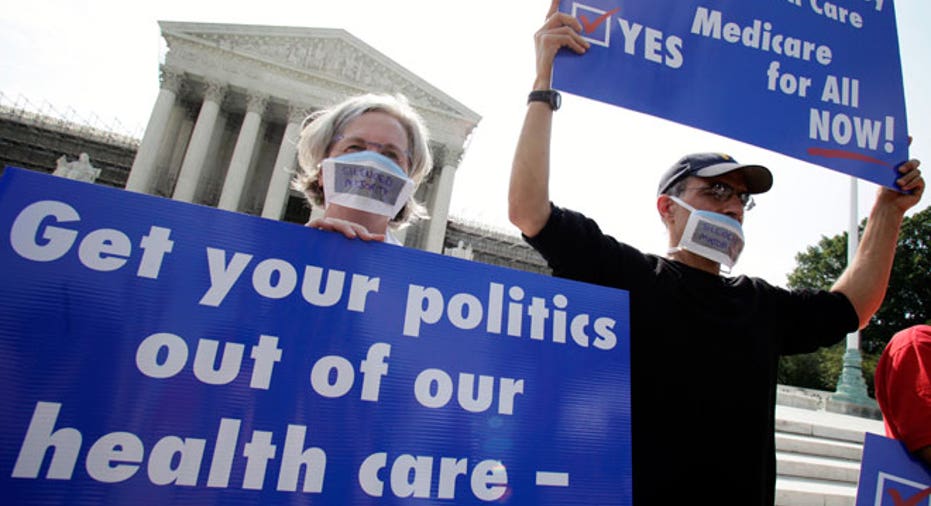ACA and the Supreme Court: Looking Back and Projecting for 2015

It's been two years since the nation’s highest court upheld the Affordable Care Act, and since then the president’s signature legislation has signed up 8 million people for coverage and has undergone 40 different delays or administrative fixes.
The law’s first open enrollment season started off rocky with the federal marketplace, healthcare.gov, not functioning properly for several weeks. The season launched in October and was extended through April 19. The Department of Health and Human Services reports 8.02 million people signed up for coverage on state and federal exchanges during this time period. Of this group, 85% were eligible for subsidies to help lower the cost of their health care premiums each month.
The ACA mandates every American to have health insurance, or face a penalty for failing to comply.
The law, which aims to make health insurance more affordable, continues to grow in cost since it was upheld by the Supreme Court. The nonpartisan Congressional Budget Office estimates that from 2015 through 2024, the ACA will cost $1.839 trillion. This is up from initial CBO projections of $1.3 trillion through 2022.
A 'Fumble' Out of the Gate
When open enrollment period began in October, the federal and some state exchanges experienced major glitches. For Devon Herrick, senior policy analyst at the National Center for Policy Analysis, the botched rollout was a defining moment for the law.
"Every step of the way, there have been glitches and issues," Herrick says. "We established an exchange, and it didn't work. Then we got the exchange software up and fixed, and then people didn't sign up. Now, months later, it seems people have finally signed up."
The operational costs for year one of running the federal exchange did not come cheap-- with a price tag of $677 million, according to Kathleen Sebelius, former HHS secretary who led department leading up to and in the law’s first enrollment season. Promoting the ACA cost $684 million, according to analysis from the Associated Press.
Yevgeniy Feyman, Manhattan Institute scholar, says the bungled rollout was a long-lasting black-eye for the law.
"It's amazing that with four years to get everything up and running, they still botched the rollout," Feyman says. "It's something the private sector has done already, so you would think they would apply lessons from the private sector on day one. Having 8 million people enrolled was also surprising for me, in a good way-- I didn't think they would be able to meet that."
Delays and Tweaks
Changes to the law were expected as it was implemented, and of the 40 different delays and changes made to the ACA, the most impactful for Feyman was President Obama's 'administrative fix' which let people keep their health plans through 2014, at the discretion of state regulators and insurers. The solution was a sigh of relief for the estimated 6 million people who received policy cancellation letters, but it also heaped extra work onto insurers, which were already busy working through the law’s new regulations.
"The discretion the executive branch has used through these two years, the delays, the unilateral decision to let compliant plans survive another year, was also not good because it messes with the expectations and rules of the law," Feyman says. "People were mad they lost their plans, so they were offered a safety valve to let them keep non-compliant plants. It's preferable not to have that discretion coming from the executive branch."
The law mandates every health insurance plan include 10 essential health benefits, including ambulatory services, prescription drug costs and mental health care. This administrative fix may have caused healthier people to stay out of the market in year one, analysts argue, causing the risk pool on exchanges to skew toward older and sicker people, which could drive up costs.
Companies received extra time to comply with the employer mandate, which requires every business with at least 50 or more full-time workers to offer them care or face a fine of $2,000 per worker, per year. For businesses with 100 or more full-timers, this kicks in in 2015, and for those with 50-to-99 workers, they have until 2016.
"2015 will be challenging for employers," Feyman says. "Those who don't offer coverage will have to start, and this may cause some chaos in the market. You have businesses that may not chose to expand because the mandate has set a hard cut off [for the number of workers] and it becomes much more costly."
A Look to 2015
Costs are a key factor heading into the second open enrollment period, which kicks off in mid-November. Analysts have predicted double-digit premium hikes for many individuals. Data from the 10 states that have already filed their initial premium rates, increases range from around 8% to more than 22%.
"On the individual side of the market, there will be a lot more uncertainty priced into premiums," Feyman says.
He notes, as does Herrick, that 2016 will be the year when the cost of this law for individuals and businesses will be the most clear. This is because the risk corridor provision of the ACA, in which the government helps foot the bill for losses insurers incur during the first two years of the law, expires.
"The key is how much this will cost," Herrick says. "Not just because of the cost to taxpayers, but also how well the exchange is working in terms of covering people at premiums that reflect the cost of care for people. New enrollees tended to be a bit older than people had hoped-- to what degree will that reflect higher costs? It has implications or how stable the exchange will be in the future."